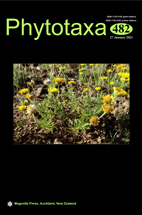Abstract
Meeboldia H.Wolff, Sinodielsia H.Wolff and their relatives (Apiaceae: Apioideae) are similar in morphology, of which taxonomic treatments were controversial. In this study, the nuclear ribosomal DNA sequence (ITS) and two plastid DNA markers (rps16 and rpl16) were applied to reconstruct phylogenetic trees. The results demonstrated that Meeboldia and Sinodielsia formed a monophyletic group in phylogenetic trees and their highly similar morphological characteristics in taproot, basal leaves, calyx teeth, ribs, and vittae of fruits also confirmed their close relationships. Consequently, the following results were obtained: (1) Sinodielsia should be merged into Meeboldia; (2) Sinodielsia delavayi was confirmed conspecific with Meeboldia yunnanensis and renamed as Meeboldia delavayi (Franch.) W.Gou & X.J.He; (3) Sinodielsia thibetica was away from other Sinodielsia species; (4) Sinodielsia microloba was a member of Meeboldia and renamed as Meeboldia microloba (Kljuykov) W.Gou & X.J.He; (5) The name of Sinodielsia clade was suggested to be replaced by Hymenidium clade. We applied multiple approaches to explore the relationship of morphologically similar taxa, which will facilitate a deep understanding of taxonomy and species diversity of Apiaceae.

